Identification and validation a TGF-β-associated long non-coding RNA of head and neck squamous cell carcinoma by bioinformatics method
- PMID: 29490660
- PMCID: PMC5831574
- DOI: 10.1186/s12967-018-1418-6
Identification and validation a TGF-β-associated long non-coding RNA of head and neck squamous cell carcinoma by bioinformatics method
Abstract
Background: The role of transforming growth factorβ (TGF-β)-induced tumor progression in advanced malignancy is well established, but the involvement of long non-coding RNAs (lncRNAs) in TGF-β signaling remains unclear. This study aimed to identify TGF-β-associated lncRNAs in head and neck squamous cell carcinoma (HNSCC).
Methods: Expression profiling of lncRNAs was obtained using Gene Expression Omnibus and The Cancer Genome Atlas. Real-time quantitative PCR was used to analyze the expression of EPB41L4A-AS2 in HNSCC cell line. We used bioinformatics resources (DAvID) to conduct Gene Ontology biological processes and KEGG pathways at the significant level. Wound healing assay, cell migration and invasion assays, were used to examine the effects of EPB41L4A-AS2 on tumor cell metastasis in vivo. Protein levels of EPB41L4A-AS2 targets were determined by western blot.
Results: A novel TGF-β-associated lncRNA, EPB41L4A-AS2, was found downregulated by TGF-β and associated with invasion and metastasis. The relationship of EPB41L4A-AS2 with the clinicopathological features and prognosis of HNSCC patients was evaluated. Bioinformatic analyses revealed that EPB41L4A-AS2 may be involved in processes associated with the tumor-associated signaling pathway, especially the TGF-β signaling pathway. Furthermore, a TGF-β-induced epithelial-to-mesenchymal transition (EMT) model was established. Low EPB41L4A-AS2 expression was determined, and overexpression of this gene inhibited cell migration and invasion in the EMT model. Moreover, EPB41L4A-AS2 suppressed TGFBR1 expression.
Conclusions: EPB41L4A-AS2 might serve as a negative regulator of TGF-β signaling and as an effective prognostic biomarker and important target in anti-metastasis therapies of HNSCC patients.
Keywords: EMT; EPB41L4A-AS2; Head and neck squamous cell carcinoma; TGF-β.
Figures
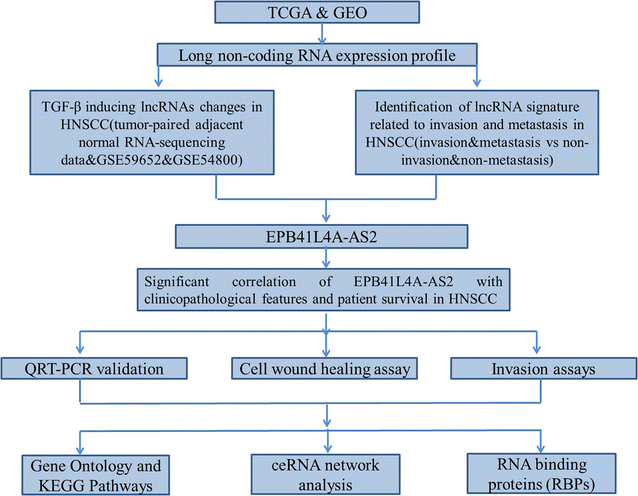
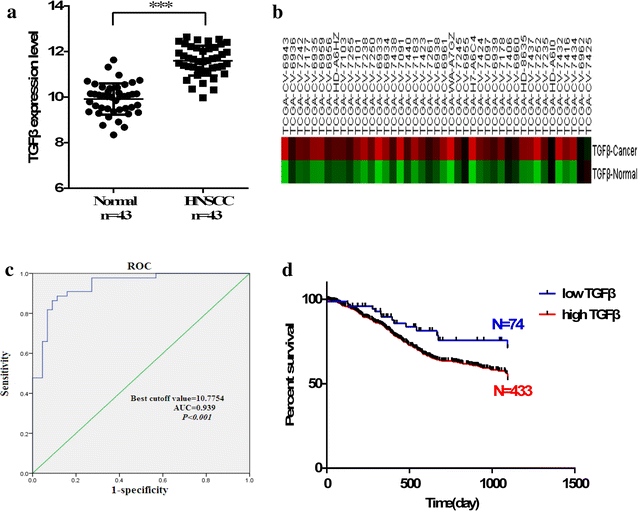

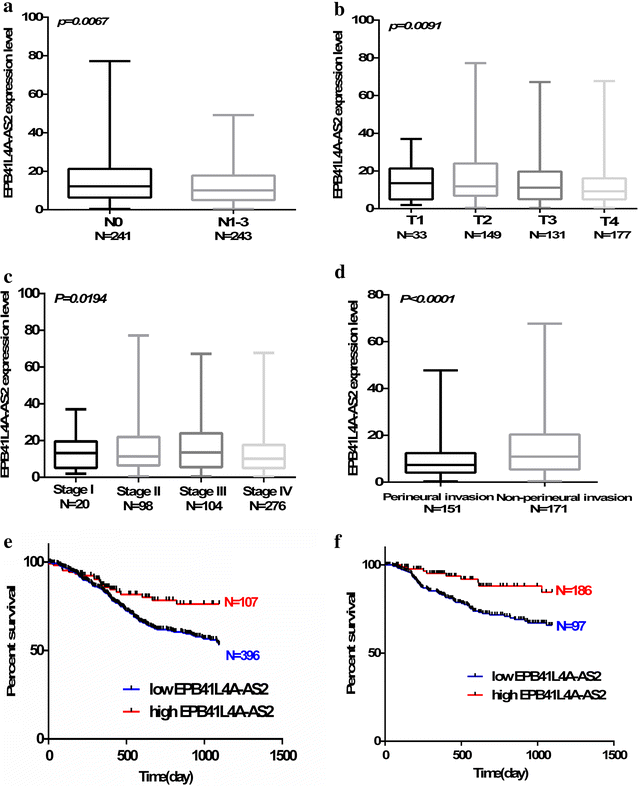
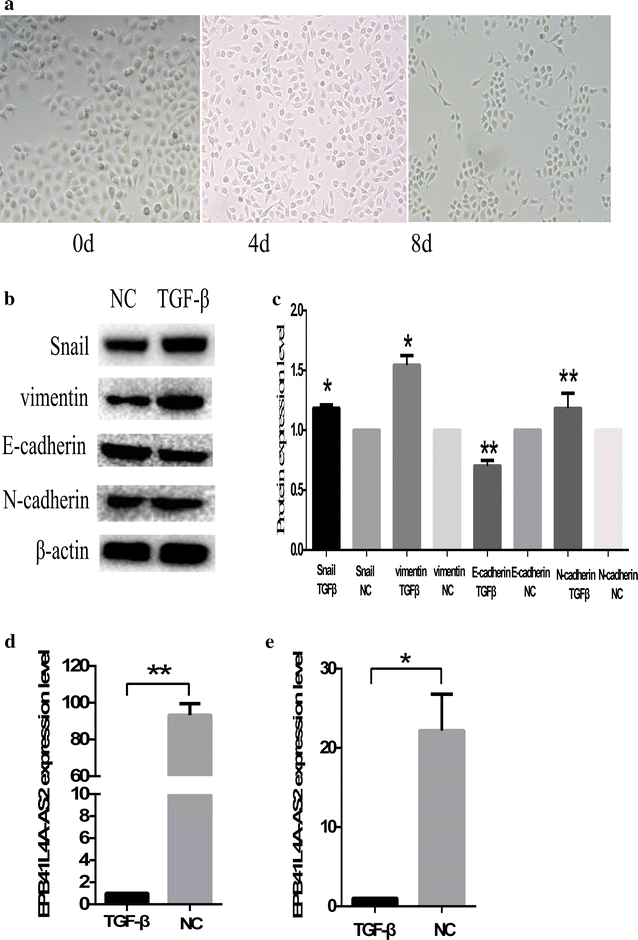
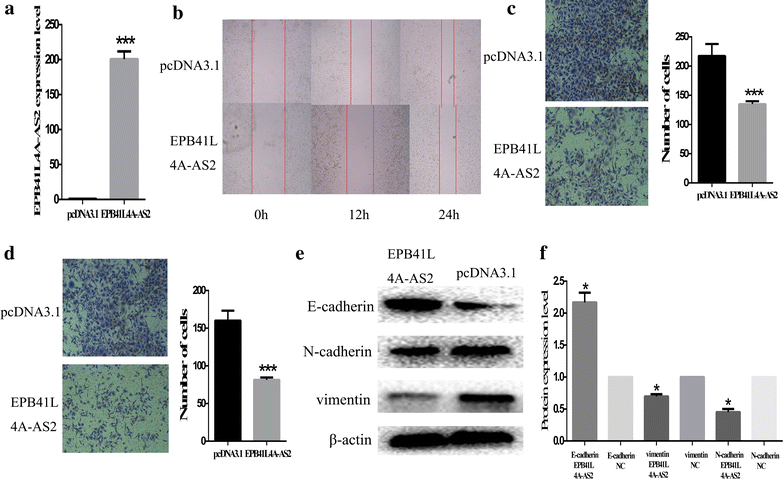
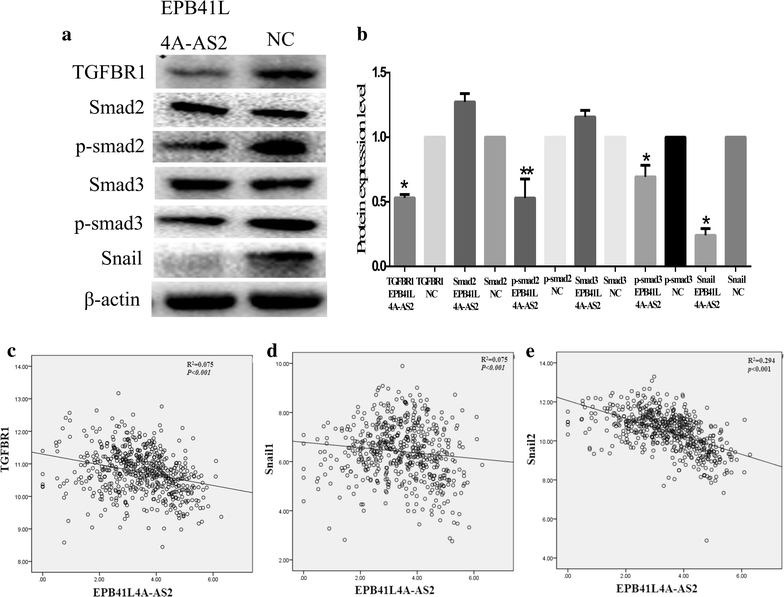
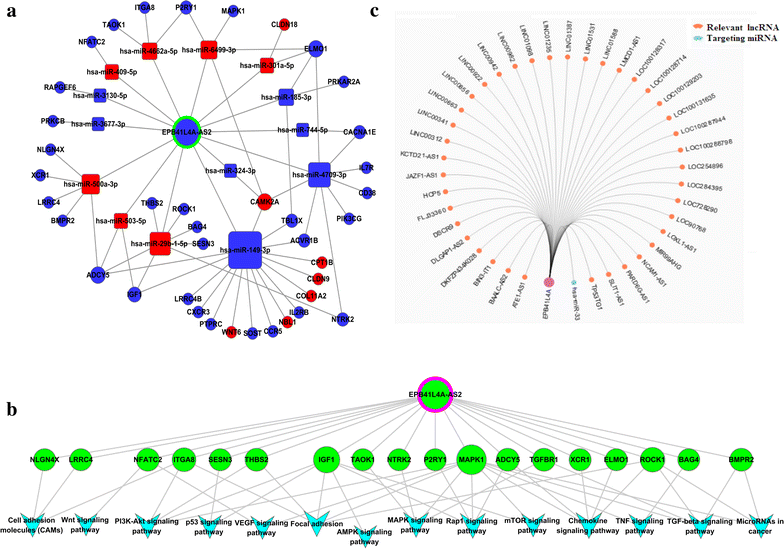
Similar articles
-
Long noncoding RNA MYOSLID promotes invasion and metastasis by modulating the partial epithelial-mesenchymal transition program in head and neck squamous cell carcinoma.J Exp Clin Cancer Res. 2019 Jun 25;38(1):278. doi: 10.1186/s13046-019-1254-4. J Exp Clin Cancer Res. 2019. PMID: 31238980 Free PMC article.
-
LncRNA EPB41L4A-AS2 represses Nasopharyngeal Carcinoma Metastasis by binding to YBX1 in the Nucleus and Sponging MiR-107 in the Cytoplasm.Int J Biol Sci. 2021 May 11;17(8):1963-1978. doi: 10.7150/ijbs.55557. eCollection 2021. Int J Biol Sci. 2021. PMID: 34131399 Free PMC article.
-
Long noncoding RNA EPB41L4A-AS2 inhibits hepatocellular carcinoma development by sponging miR-301a-5p and targeting FOXL1.J Exp Clin Cancer Res. 2019 Apr 10;38(1):153. doi: 10.1186/s13046-019-1128-9. J Exp Clin Cancer Res. 2019. PMID: 30971290 Free PMC article.
-
Long non-coding RNAs orchestrate various molecular and cellular processes by modulating epithelial-mesenchymal transition in head and neck squamous cell carcinoma.Biochim Biophys Acta Mol Basis Dis. 2021 Nov 1;1867(11):166240. doi: 10.1016/j.bbadis.2021.166240. Epub 2021 Aug 5. Biochim Biophys Acta Mol Basis Dis. 2021. PMID: 34363933 Review.
-
Expression and function of long non-coding RNAs in head and neck squamous cell carcinoma.Exp Mol Pathol. 2020 Feb;112:104353. doi: 10.1016/j.yexmp.2019.104353. Epub 2019 Dec 5. Exp Mol Pathol. 2020. PMID: 31812485 Review.
Cited by
-
Integrated Machine Learning and Single-Sample Gene Set Enrichment Analysis Identifies a TGF-Beta Signaling Pathway Derived Score in Headneck Squamous Cell Carcinoma.J Oncol. 2022 Sep 1;2022:3140263. doi: 10.1155/2022/3140263. eCollection 2022. J Oncol. 2022. PMID: 36090900 Free PMC article.
-
The role of long noncoding RNAs as regulators of the epithelial-Mesenchymal transition process in oral squamous cell carcinoma cells.Front Mol Biosci. 2022 Aug 29;9:942636. doi: 10.3389/fmolb.2022.942636. eCollection 2022. Front Mol Biosci. 2022. PMID: 36106022 Free PMC article. Review.
-
Exosomal hsa_circ_0125310 promotes cell proliferation and fibrosis in diabetic nephropathy via sponging miR-422a and targeting the IGF1R/p38 axis.J Cell Mol Med. 2022 Jan;26(1):151-162. doi: 10.1111/jcmm.17065. Epub 2021 Dec 2. J Cell Mol Med. 2022. PMID: 34854210 Free PMC article.
-
Long non-coding RNA LOC541471: A novel prognostic biomarker for head and neck squamous cell carcinoma.Oncol Lett. 2019 Feb;17(2):2457-2464. doi: 10.3892/ol.2018.9831. Epub 2018 Dec 14. Oncol Lett. 2019. PMID: 30675311 Free PMC article.
-
The role of long non-coding RNAs in the pathogenesis of head and neck squamous cell carcinoma.Mol Ther Oncolytics. 2021 Dec 6;24:127-138. doi: 10.1016/j.omto.2021.12.001. eCollection 2022 Mar 17. Mol Ther Oncolytics. 2021. PMID: 35024439 Free PMC article. Review.
References
Publication types
MeSH terms
Substances
Grants and funding
LinkOut - more resources
Full Text Sources
Other Literature Sources

